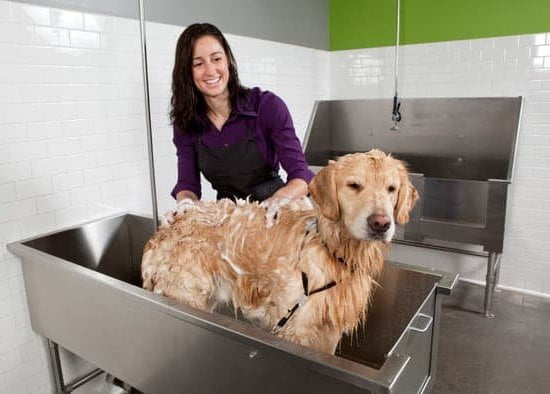Are you looking to learn how to get your dog trained to be an ESA? Emotional Support Animals (ESAs) play a crucial role in providing comfort and support for individuals dealing with mental health challenges. Understanding the difference between ESAs and service dogs, as well as the legal requirements for obtaining an ESA letter, is essential for those considering ESA training.
The process of training a dog to become an emotional support animal involves careful consideration of breed, temperament, and certification. Whether you’re considering adopting a rescue dog or have a specific breed in mind, knowing what characteristics to look for is key. Additionally, finding a qualified trainer who understands the specific needs of ESAs and utilizes positive reinforcement methods is crucial for successful training.
Once the basic obedience training is established, the focus shifts to emotional support training and public access behavior. Recognizing signs of anxiety and distress, as well as teaching calming techniques and appropriate public etiquette, are all important aspects of ESA training. Maintaining ESA certification through ongoing education and support further ensures that your furry companion can continue to provide valuable emotional support when needed.
Legal Requirements for ESAs
The legal requirements for Emotional Support Animals (ESAs) are an important aspect to consider for individuals seeking to have their dogs trained as ESAs. Understanding the legalities surrounding ESAs is crucial in ensuring that both the owner and the dog can benefit from the privileges and protections provided by law.
The Process of Obtaining an ESA Letter
To legally designate a dog as an ESA, individuals must first obtain an ESA letter from a licensed mental health professional. This letter serves as documentation that verifies the individual’s need for an emotional support animal due to a mental health condition. The process typically involves a consultation with a mental health professional who can evaluate the individual’s condition and determine whether an ESA would be beneficial.
Fair Housing Act and ADA Regulations
It is important to be familiar with the Fair Housing Act and Americans with Disabilities Act (ADA) regulations related to ESAs. The Fair Housing Act allows individuals with ESAs to live in housing that has a “no pets” policy, while the ADA provides certain rights for individuals with disabilities who use service animals. Understanding these regulations can help owners advocate for their rights and ensure that their ESA is accommodated in various settings.
Requirements for Flying With an ESA
For those who plan to travel by air with their ESA, it is essential to be aware of the requirements set forth by airlines and aviation authorities. This may include providing advanced notice, submitting necessary documentation, or following specific guidelines for traveling with an ESA. Being well-informed about these requirements can help make the process of flying with an ESA smoother and more manageable.
Choosing the Right Dog for ESA Training
When choosing a dog for ESA training, it is essential to consider several factors to ensure the success of the animal in fulfilling its role as an emotional support companion. The first step in selecting a dog for ESA training is to look at the best breeds that are known for their temperament and characteristics conducive to providing emotional support.
Breeds such as Golden Retrievers, Labrador Retrievers, and Cavalier King Charles Spaniels are popular choices due to their friendly, gentle nature and adaptability.
In addition to breed selection, it is important to evaluate an individual dog’s personality and behavior traits. Look for dogs that exhibit calmness, empathy, and a willingness to bond with their owner. Proper socialization is also crucial, so consider the dog’s ability to interact positively with other animals and humans. Keep in mind that while breed tendencies can guide your decision, each dog is unique, so it is essential to assess an individual’s suitability for ESA training.
Lastly, consider the option of adopting a rescue dog for ESA training. Many rescue dogs have experienced trauma or neglect and can benefit from being trained as an emotional support animal. By providing a loving home and proper training, these dogs can develop into reliable companions and provide vital emotional support to their owners in need. Adoption not only gives these animals a second chance but also promotes the essential role of rescue animals in mental health care.
Finding a Qualified Trainer
When it comes to training your dog to be an Emotional Support Animal (ESA), finding a qualified trainer is essential for the success of the process. A certified professional can provide the guidance and expertise needed to ensure that your dog is properly trained to fulfill its role as an ESA. Here are some important factors to consider when searching for a qualified trainer:
- Certification: Look for trainers who are certified by reputable organizations such as the Certification Council for Professional Dog Trainers (CCPDT) or the International Association of Canine Professionals (IACP). Certification ensures that the trainer has met specific standards of knowledge and skill in dog training.
- Experience: In addition to certification, it’s important to consider the trainer’s experience working with ESAs specifically. An experienced trainer will be familiar with the unique requirements and qualities necessary for a successful ESA.
- Training methods: When selecting a trainer, inquire about their training methods. Positive reinforcement techniques, which focus on rewarding desired behaviors rather than punishing undesired ones, are generally considered to be the most effective and humane approach to ESA training.
Understanding the training process is also crucial when finding a qualified trainer for your dog’s ESA training. Trainers should have a comprehensive plan in place that covers basic obedience training as well as specialized emotional support training. Additionally, they should be able to tailor their approach based on your dog’s individual temperament and needs.
Ultimately, finding a qualified trainer for your dog’s ESA training requires careful consideration of their certification, experience, and methods. Taking the time to research and select the right trainer will greatly contribute to the success of your dog in fulfilling its role as an ESA.
Basic Obedience Training
When training your dog to be an Emotional Support Animal (ESA), it is essential to start with basic obedience training. This foundation will help your dog develop the discipline and good behavior necessary to fulfill their role as an ESA. Here are some key aspects to consider when focusing on basic obedience training for your ESA:
- Teaching commands such as sit, stay, and come: These basic commands are fundamental for any well-behaved dog, especially for an ESA. Teaching these commands will ensure that your dog can follow instructions and behave appropriately in various situations.
- Leash training and proper behavior in public: It’s important for ESAs to be well-behaved while on a leash and in public spaces. Leash training will help your dog understand boundaries and how to conduct themselves while out and about, which is crucial for their role as emotional support animals.
- Socialization with other animals and humans: Proper socialization is key for any dog, but especially for ESAs who may accompany their owners into different environments. Ensuring that your dog is comfortable around other animals and interacts well with people will make them more effective in providing emotional support.
By focusing on these aspects of basic obedience training, you can set a strong foundation for your dog’s journey to becoming a certified Emotional Support Animal.
In addition to the above-mentioned skills, creating a supportive environment during training sessions is vital. Consistent positive reinforcement methods such as treats, praise, or toys can aid in cultivating the desired behaviors in your ESA. Remember that patience and understanding are essential when working with your dog during their basic obedience training as they prepare to fulfill their role as an Emotional Support Animal.
Emotional Support Training
Recognizing Signs of Anxiety and Distress
Emotional support training for ESAs goes beyond basic obedience and focuses on recognizing signs of anxiety and distress in their owners. It is crucial for these animals to be able to sense when their owner is experiencing emotional turmoil and provide the necessary support. This could include alerting others, physical contact, or simply staying close to the person in need.
Training for Calming Techniques and Support
Once an ESA recognizes that their owner is experiencing anxiety or distress, they should be trained to provide calming techniques and support. This may involve gentle physical contact, allowing themselves to be petted, or other comforting behaviors. The training process typically involves conditioning the dog to respond positively in situations where their owner requires emotional support.
Understanding the Bond Between Owner and ESA
Emotional support training also emphasizes building a strong bond between the owner and the ESA. This bond is essential for the animal to effectively provide emotional support. It involves activities that foster trust, communication, and understanding between the two parties. Building a strong bond can contribute significantly to the effectiveness of an ESA in providing emotional support to its owner during times of need.
Public Access Training
ESAs, or Emotional Support Animals, provide essential support for individuals struggling with mental health issues. One of the key aspects of training an ESA is ensuring that they are able to behave appropriately in public spaces. This is known as public access training, and it’s crucial for both the well-being of the owner and the comfort of those around them.
Public Access Training teaches ESAs how to behave appropriately in public spaces such as restaurants, stores, and public transportation. This training involves teaching the animal good manners, proper behavior around other people and animals, and understanding their rights and limitations in public areas. This is important not only for the comfort of others but also acts as a form of advocacy by demonstrating to society that ESAs can be well-behaved members of public spaces.
Some key aspects of Public Access Training include exposure exercises to various environments the ESA might encounter while in public, reinforcing appropriate behavior through positive reinforcement methods, addressing any anxiety or distress signs that might arise during these outings, and teaching the animal its rights and restrictions when accompanying its owner in various locations according to ADA regulations.
| Key Aspects | Importance |
|---|---|
| Exposure exercises | Helps ESA adjust to different environments |
| Positive reinforcement methods | Reinforces appropriate behavior |
| Anxiety/distress management | Aids in addressing potential concerns during outings |
Maintaining ESA Certification
In conclusion, maintaining ESA certification is a crucial aspect of having an emotional support animal. Renewing the ESA letter is an important step in ensuring that your furry companion continues to provide you with the necessary emotional and mental support.
It is essential to stay updated on the requirements and regulations for ESAs, as they may change over time. By staying informed and following the necessary steps for certification renewal, you can continue to benefit from having an ESA in your life.
Additionally, continuing training and support for the ESA is vital for their well-being and their ability to provide the needed emotional support. Consistent training helps maintain the bond between you and your ESA, ensuring that they are able to recognize signs of anxiety or distress and provide appropriate support. Ongoing training also helps them behave appropriately in public spaces, which is crucial for maintaining their status as an ESA.
Lastly, there are resources available for ongoing ESA education and assistance. Whether it’s attending workshops or seeking guidance from qualified professionals, there are various avenues to explore in order to continue learning about how best to care for and train your ESA. By taking advantage of these resources, you can ensure that both you and your furry friend receive the necessary support for a fulfilling relationship as an emotional support team.
Frequently Asked Questions
Can I Train My Dog to Be Emotional Support Dog?
Yes, it is possible to train your dog to be an emotional support dog. However, it’s important to note that not all dogs are suited for this role.
A good candidate for training as an emotional support dog is one that is naturally calm, well-behaved, and responsive to training. It’s also crucial to ensure that the dog has a strong bond with their owner and enjoys providing comfort and companionship.
What Commands Does a Emotional Support Dog Need to Know?
An emotional support dog should be trained in basic obedience commands such as sit, stay, come, and heel. Additionally, they should be able to walk calmly on a leash and remain focused on their owner even in distracting environments.
Other helpful commands include “leave it” for ignoring potential triggers and “go to your place” for providing comfort or space when needed.
Are Online ESA Letters Legit?
The legitimacy of online ESA letters can vary significantly. While some online services may provide legitimate ESA letters from licensed mental health professionals, others may issue letters without proper evaluation or qualifications.
It’s important for individuals seeking an ESA letter to thoroughly research the provider and ensure they are legitimate before proceeding with any online services. Consulting with a trusted mental health professional is often the safest route for obtaining a legitimate ESA letter.

Welcome to the blog! I am a professional dog trainer and have been working with dogs for many years. In this blog, I will be discussing various topics related to dog training, including tips, tricks, and advice. I hope you find this information helpful and informative. Thanks for reading!





